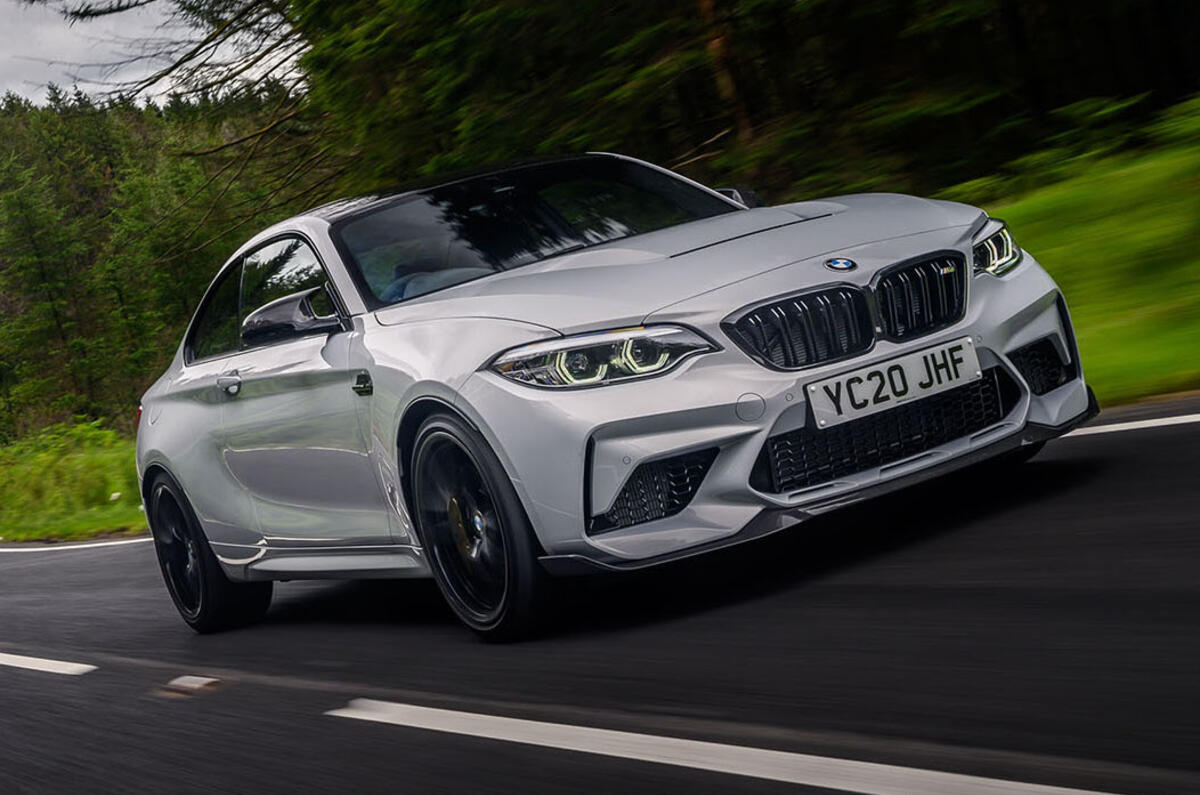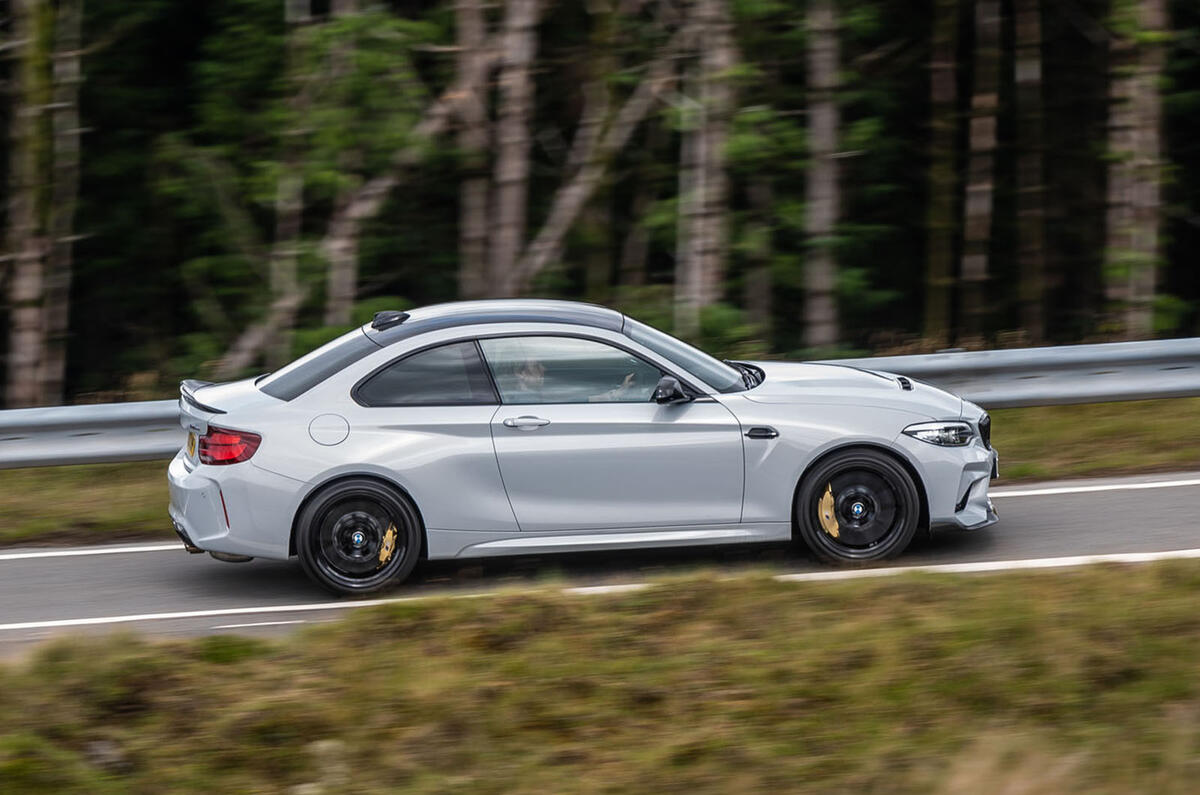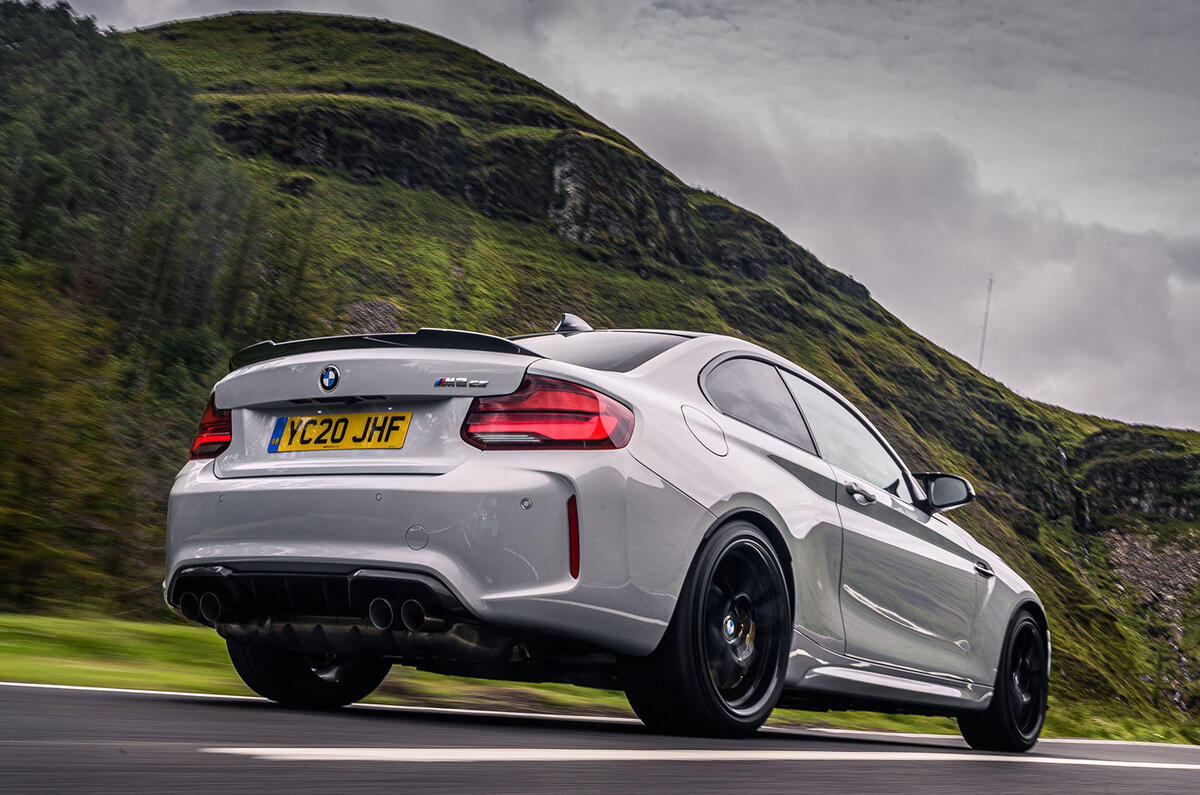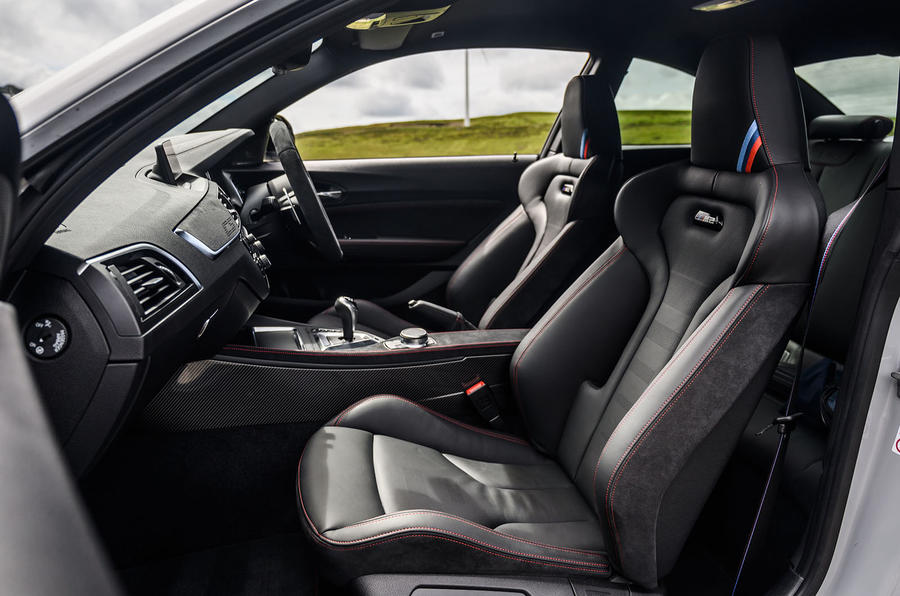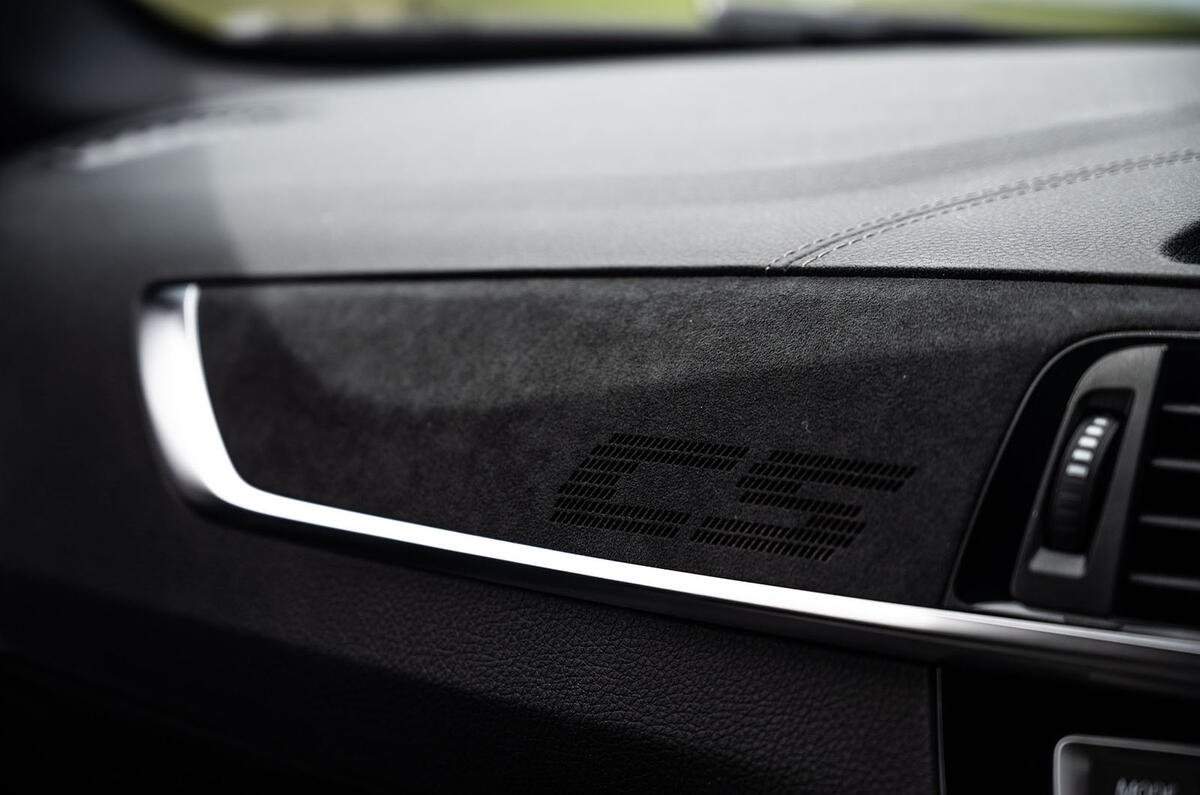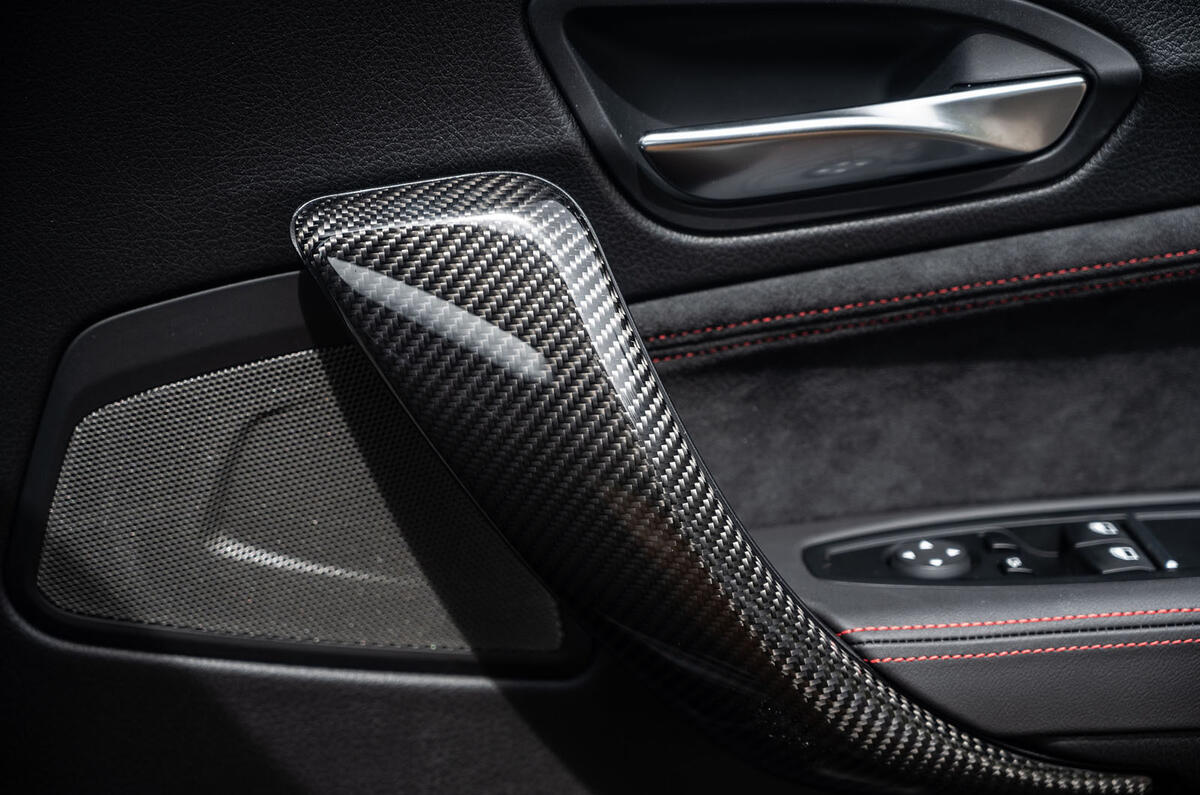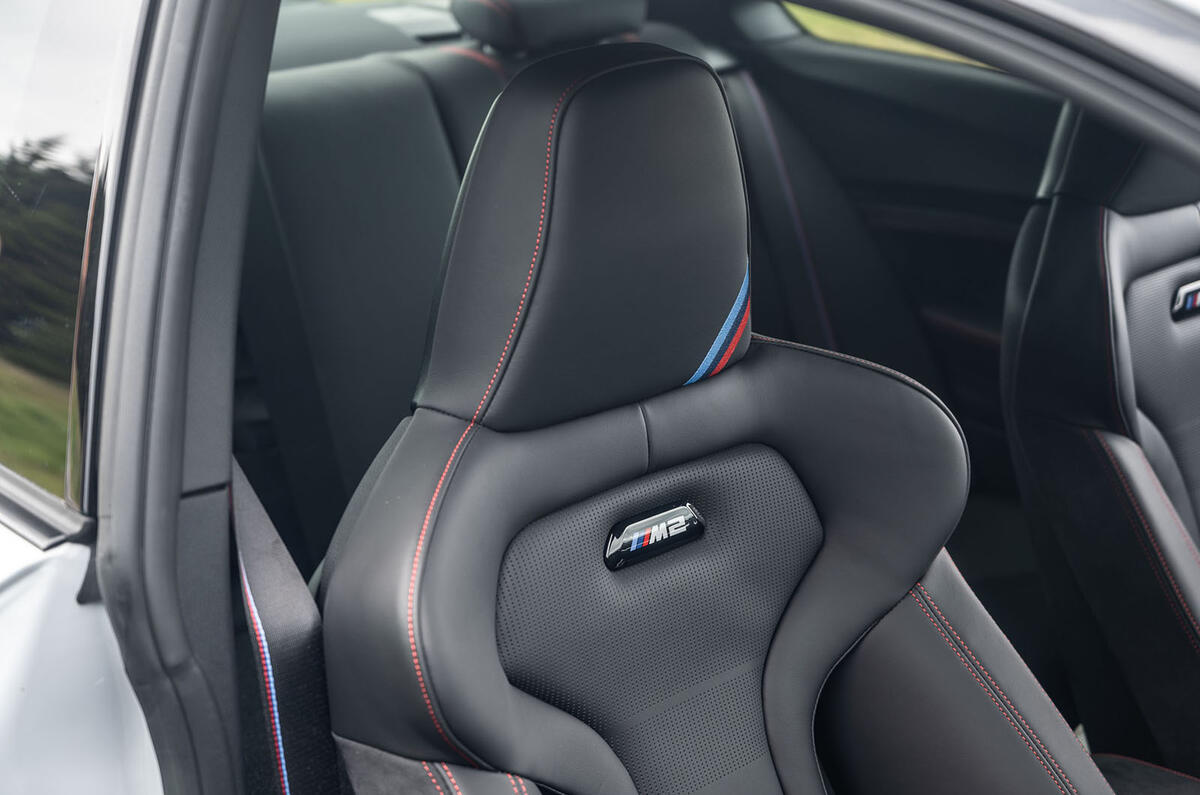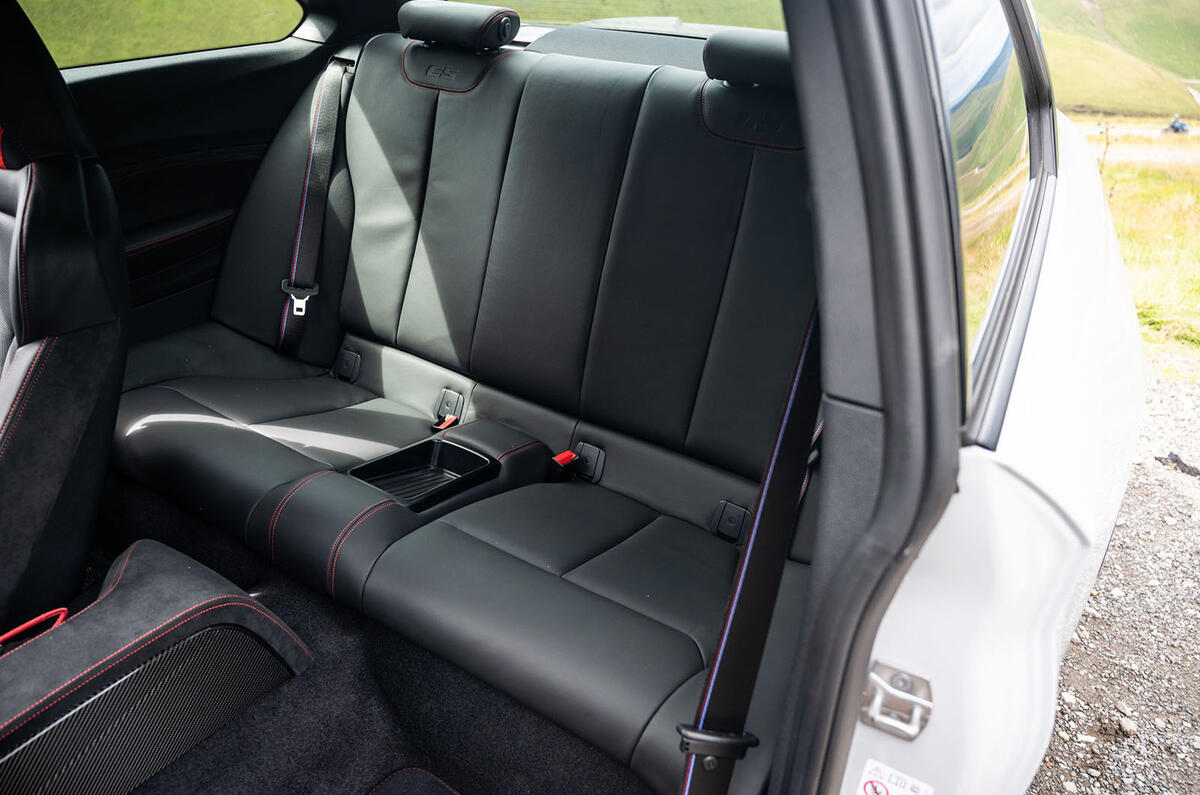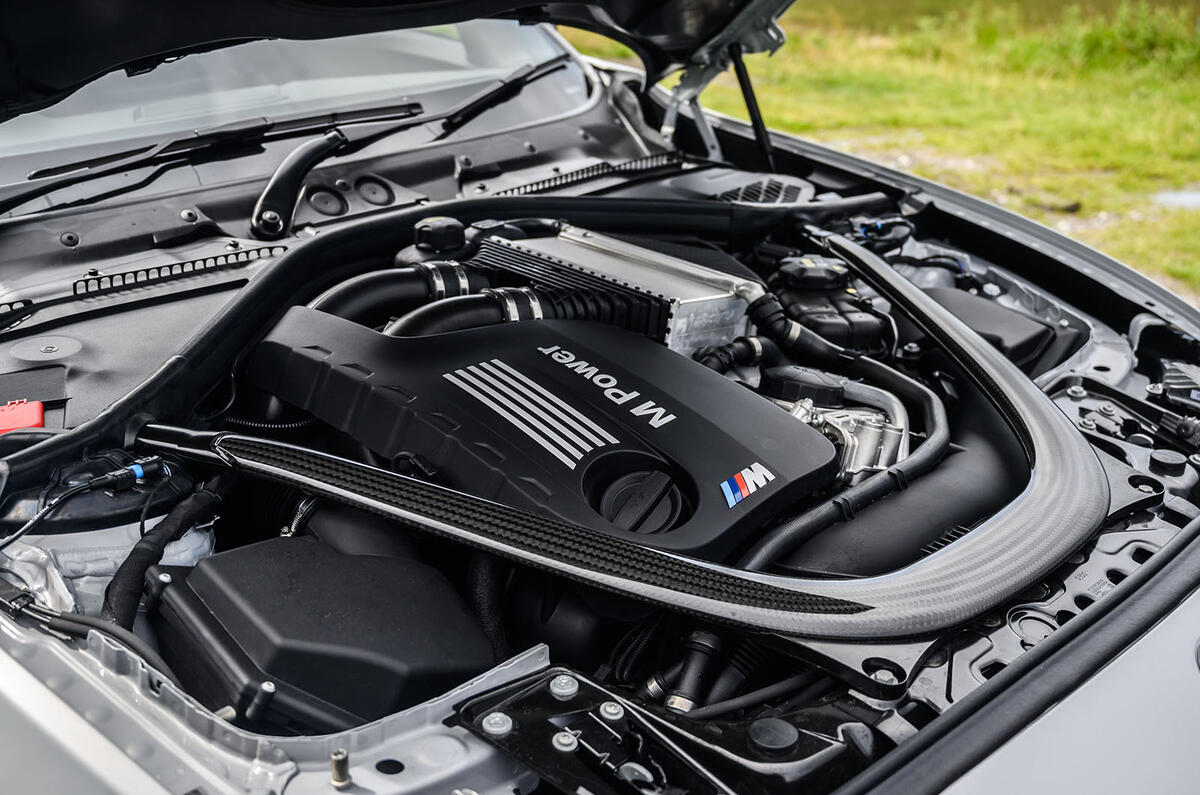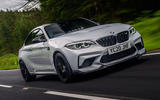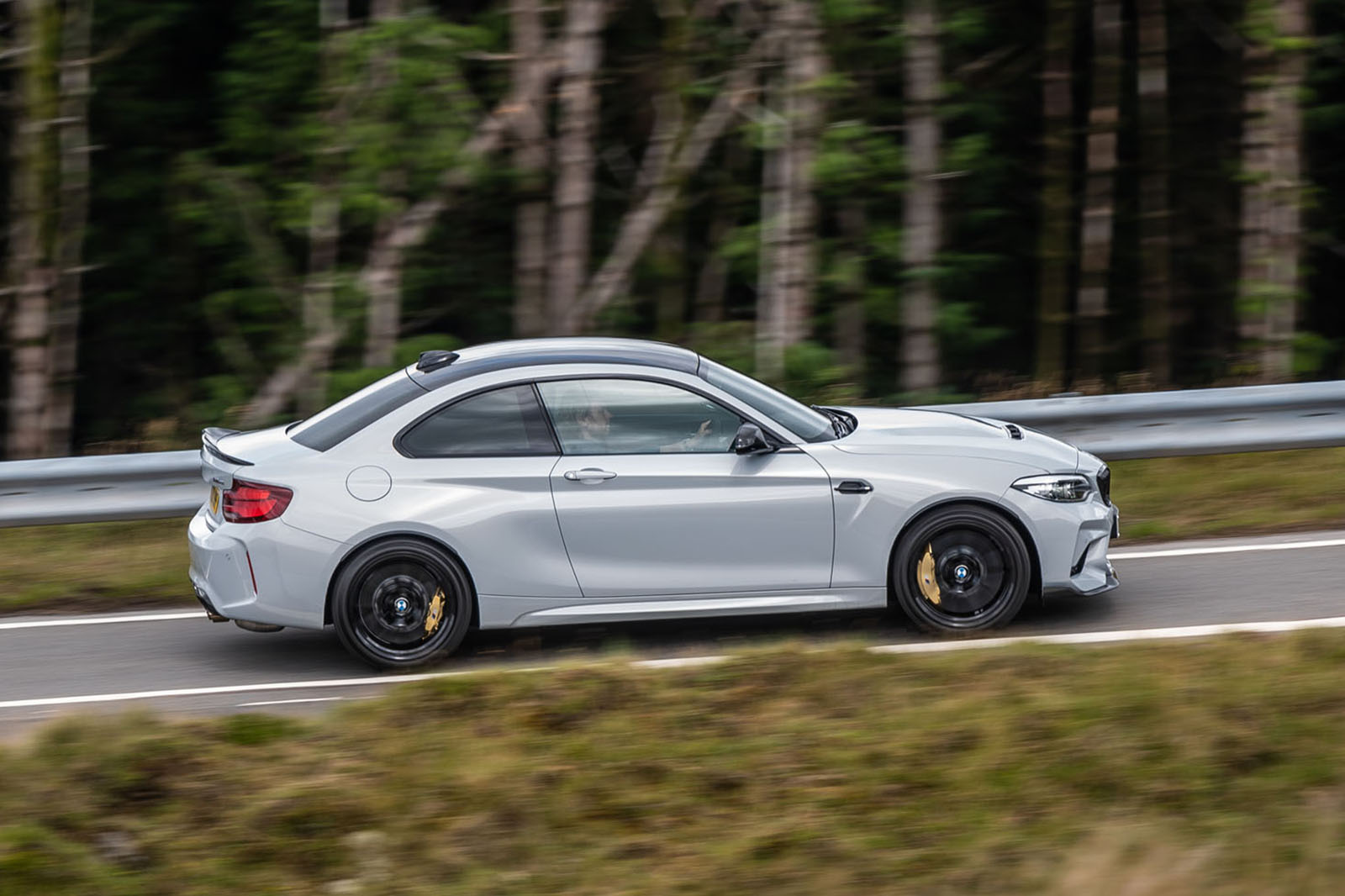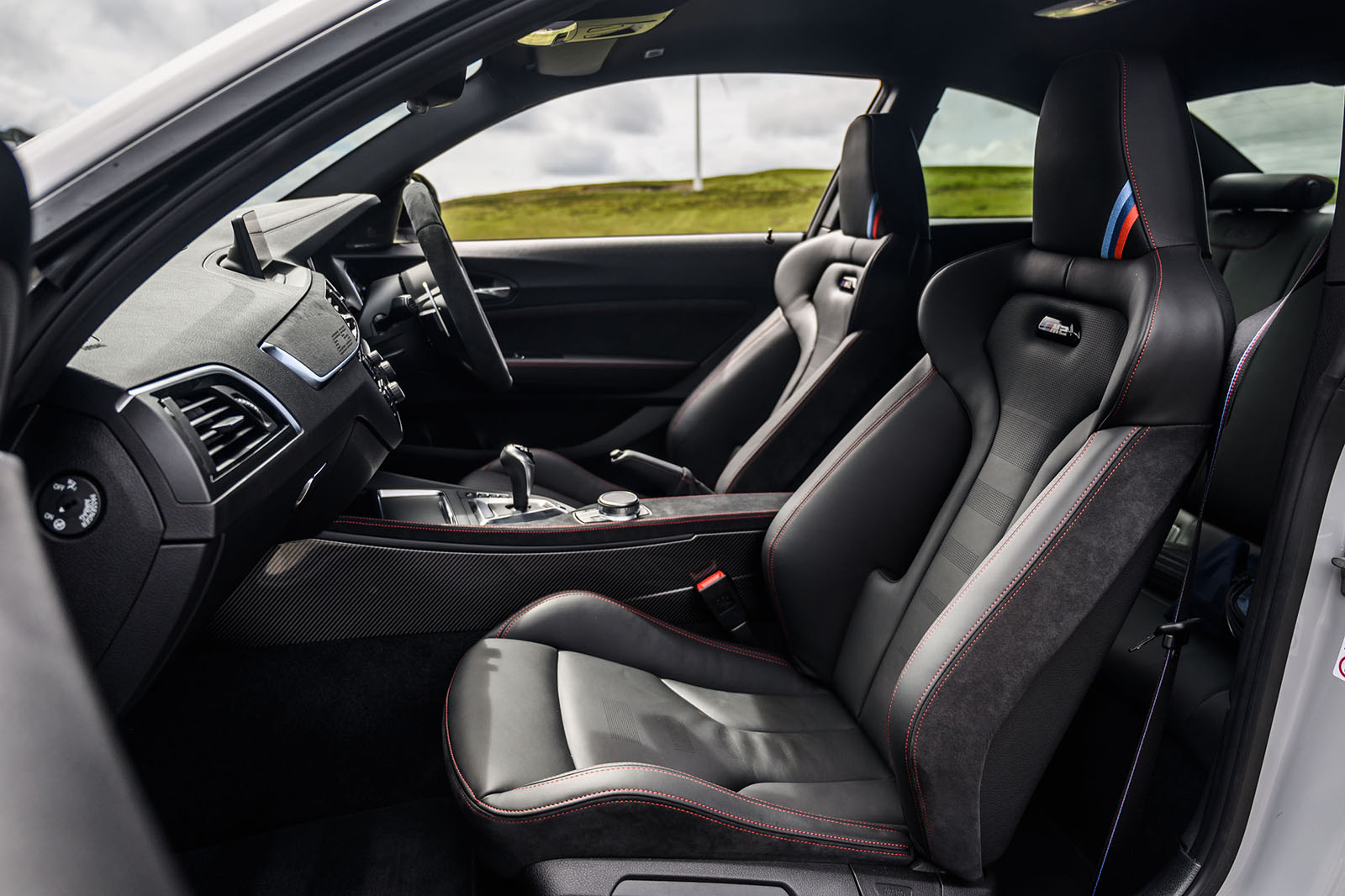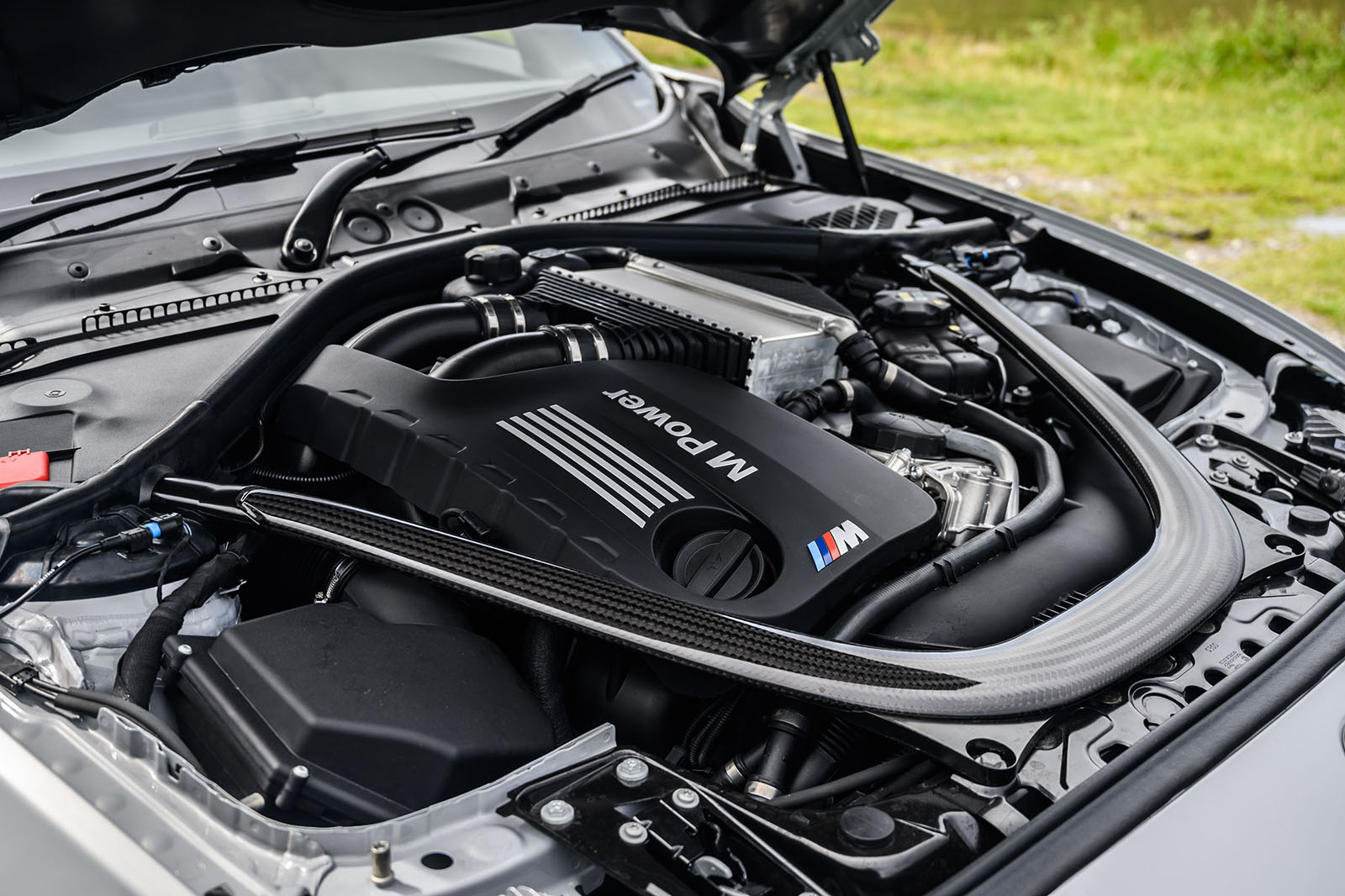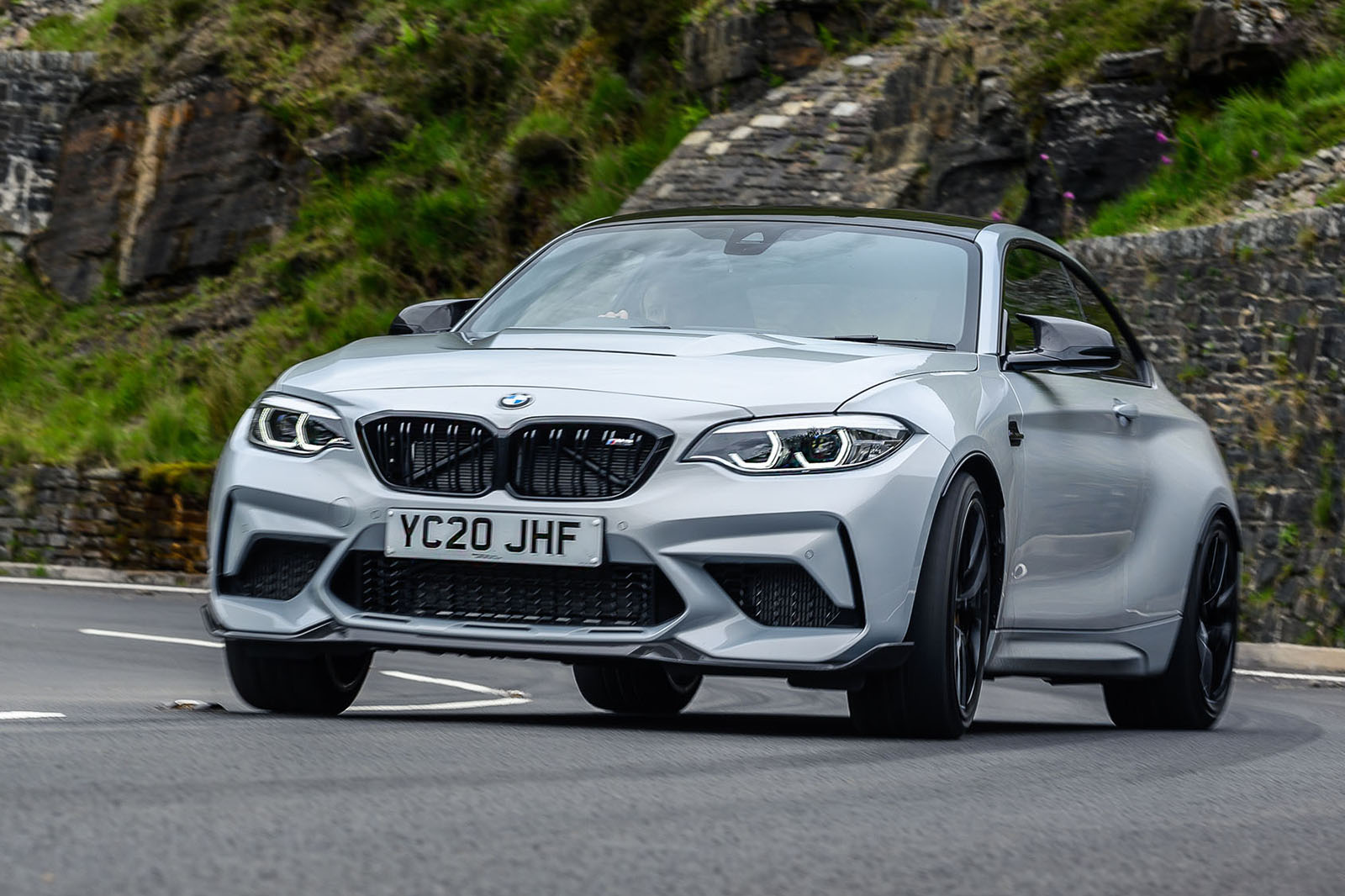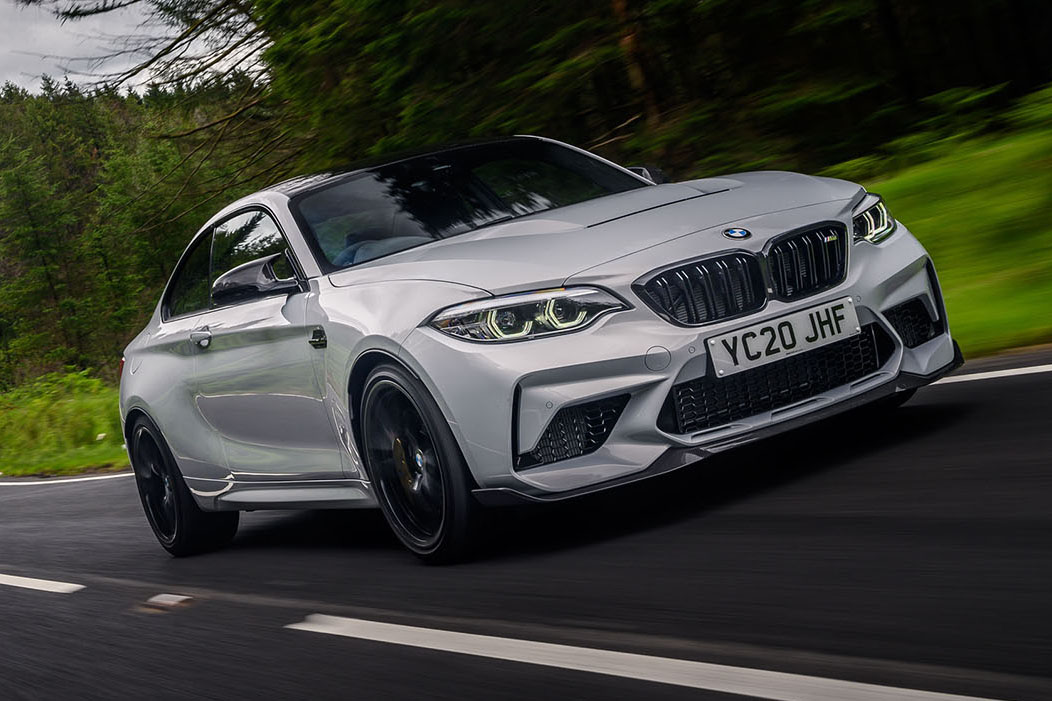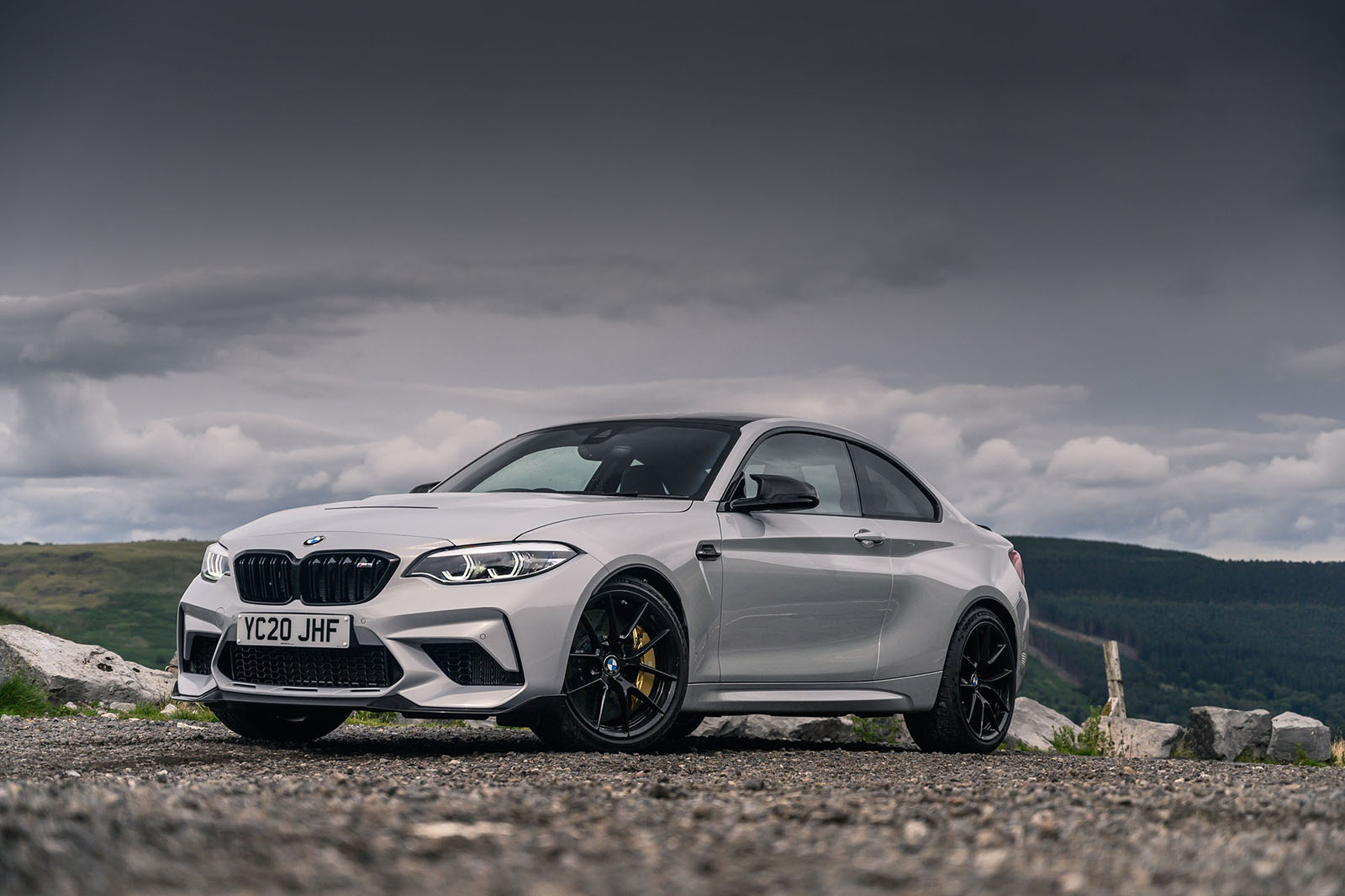Unsurprisingly, this car also has the same playful side as the M2 Competition, even if you do have to work harder to free it, should you pick those optional grippy Cup 2 tyres. The Active M Differential in the rear axle maintains traction well but, with deliberate efforts from the driver, it’s overcome easily enough and operates progressively when the car does begin to pivot. It doesn’t work quite as communicatively or predictably as the best purely mechanical limited-slip diffs, but neither does it promote understeer early on in corners.
All this being said, the CS doesn’t generate the delicacy, alacrity or flow of an Alpine A110 or Porsche 718 Cayman. It also lacks the off-throttle adjustability of those kinds of cars, although the BMW is less flighty in poor weather and anyone who simply wants to feel like they’re in a loosely sanitised touring car should look no further.
We’ll have to wait for another time to see just how fast the M2 CS will go on the Dunlop dry handling circuit at MIRA but, based on its showing on the Hill Route at Millbrook, we wouldn’t be surprised were it to acquire some notable scalps.
However well you imagine this car grips and goes, you’ve probably not imagined hard enough. With help from Michelin’s Cup 2 tyres, the front axle is shockingly adhesive, especially under trailing brakes. The CS’s instant turn-in response isn’t quite as crisp as some mid-engined cars, but once you’re beyond that initial change of direction, the nose remains locked on your chosen line.
At this point, what happens next is up to you. It’s not difficult to drive up to the limit of grip and traction and keep the chassis balanced at that point. But neither is it difficult to tease the tail wide and keep it there. You might even want to grab another gear while it’s out there.
Comfort and isolation
In the case of the M2 CS, such pugnacious bodywork and suspension liberated of various rubber bushings paint a picture of an uncompromising road car that values excitement and performance above all else. And there is, perhaps, some truth in this. However, the reality is that, in the main, this track-day-ready product copes with British roads well.
Being taller and heavier than mid-engined rivals such as the Cayman and A110 does, of course, necessitate closer body control and this manifests in an everyday ride quality that can feel agitated. However, the BMW’s damping is generally progressive, to the extent that along some uneven road surfaces, it is actually preferable to set the suspension to its firmest Sport Plus mode, which quells uncomfortable side-to-side motions but seems to give away remarkably little in compliancy.
The effects of tyre and wind noise are also unremarkable and the high-speed ride is certainly alert but not in any way tiresome. Set the suspension to Comfort on the motorway and the M2 CS will cruise all day without becoming tiring.
Admittedly, some of this is down to the generously padded (but not sloppily soft) seats and the fact that the fundamental driving position is so carefully thought out. With its raised driving position in comparison with the mid-engined alternatives, the M2 CS also gives the driver an excellent view of the road – both in front and behind. These are simple elements of the driving experience but also important ones in the context of a machine that, for many owners, will need to earn its keep day to day.


